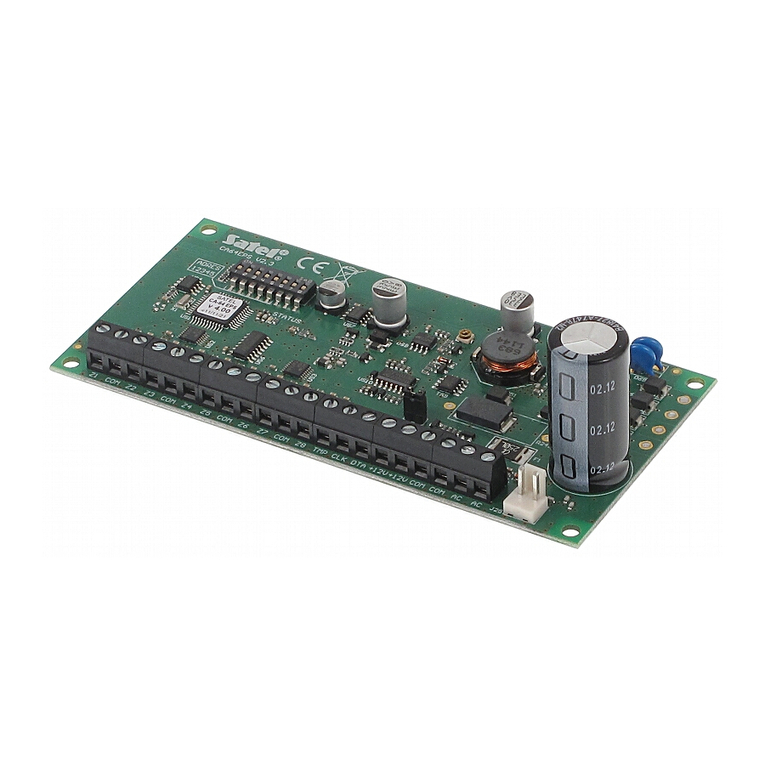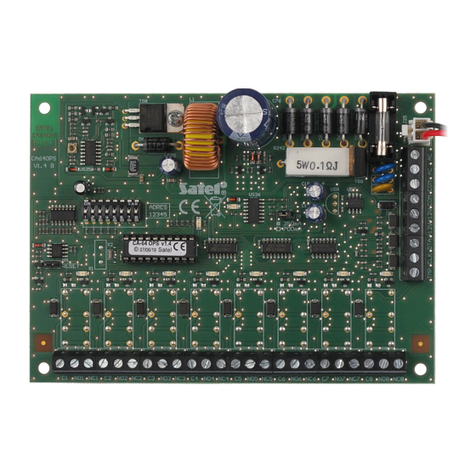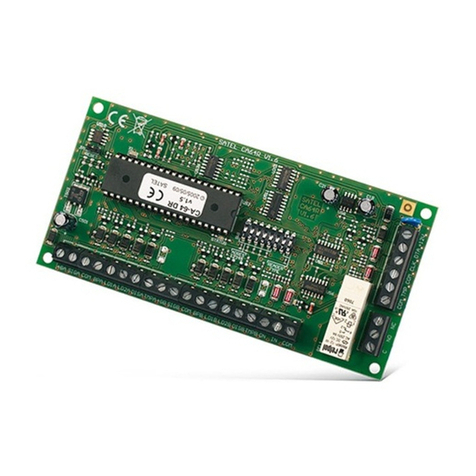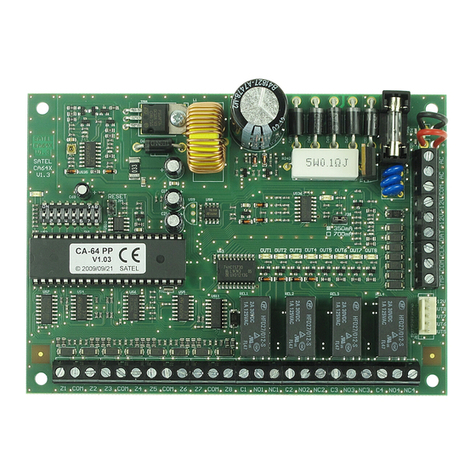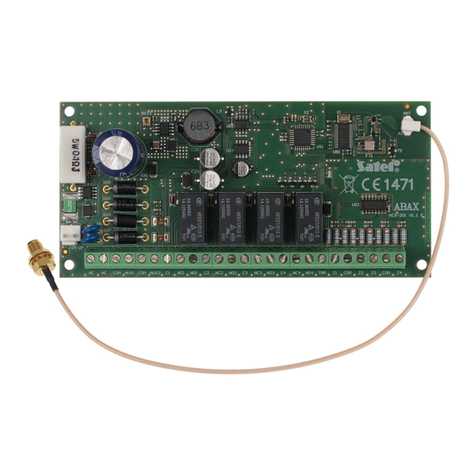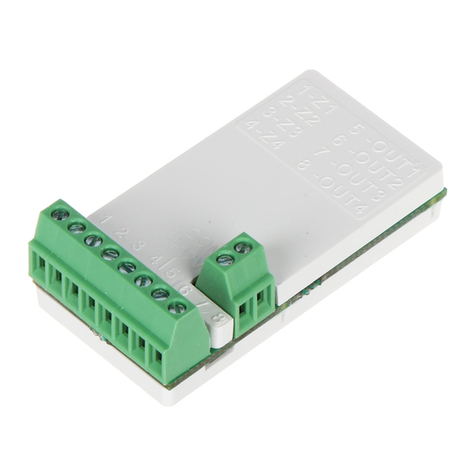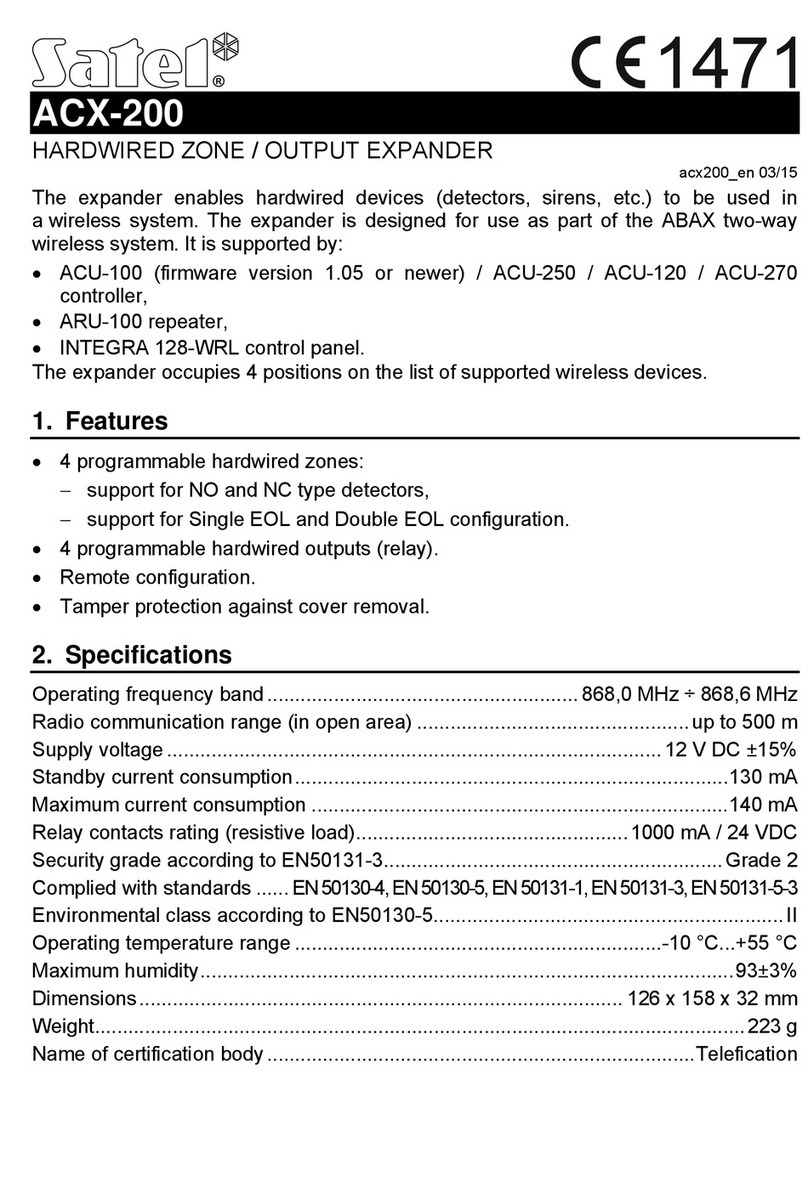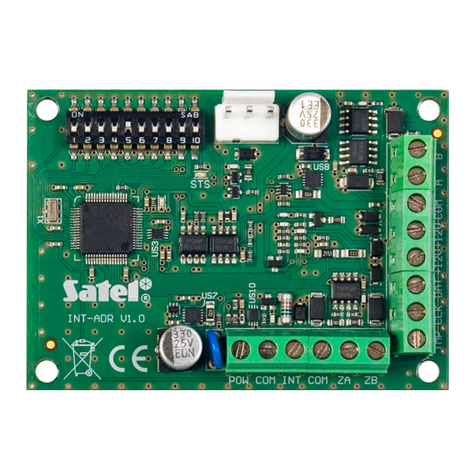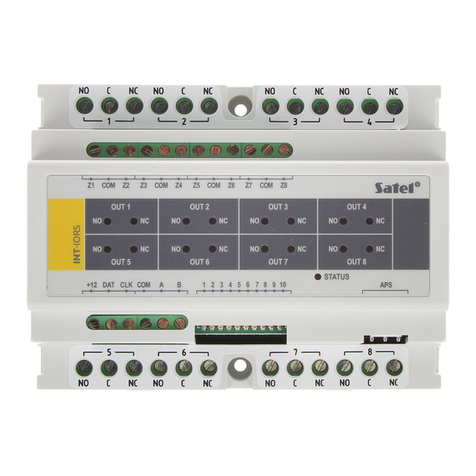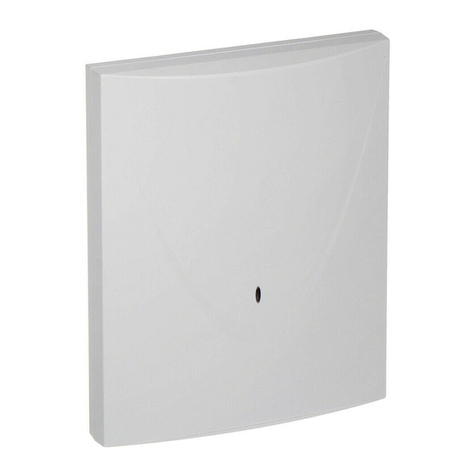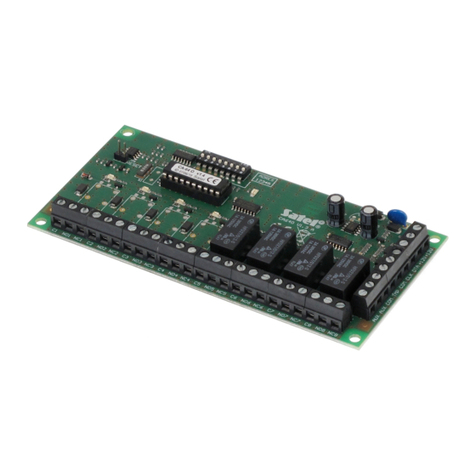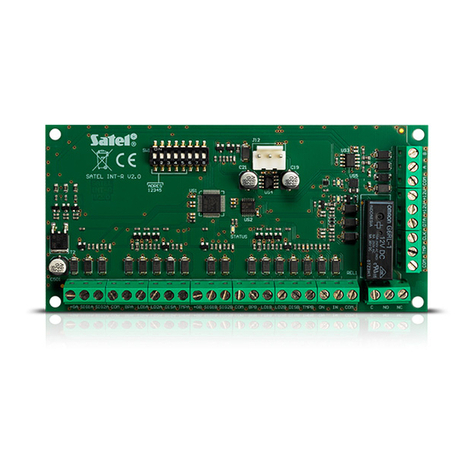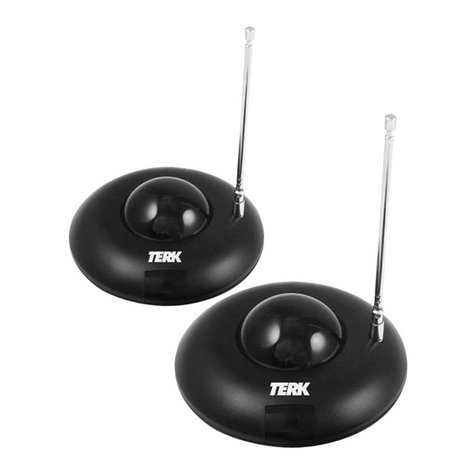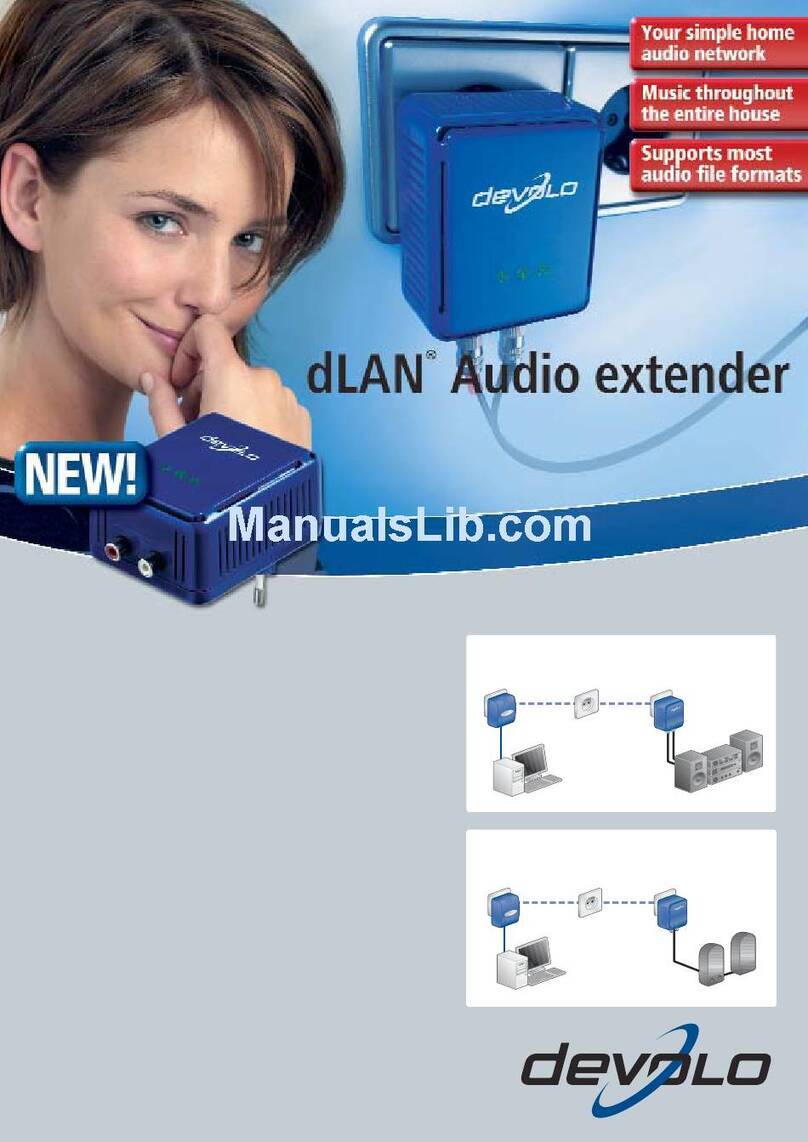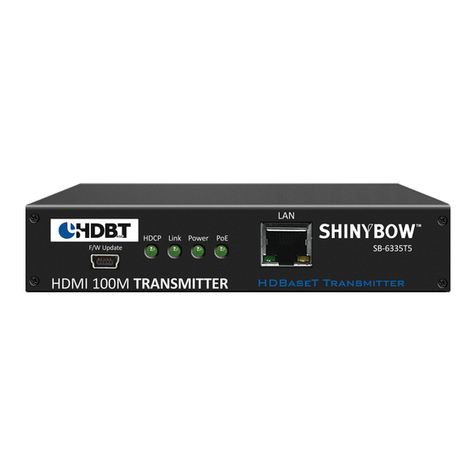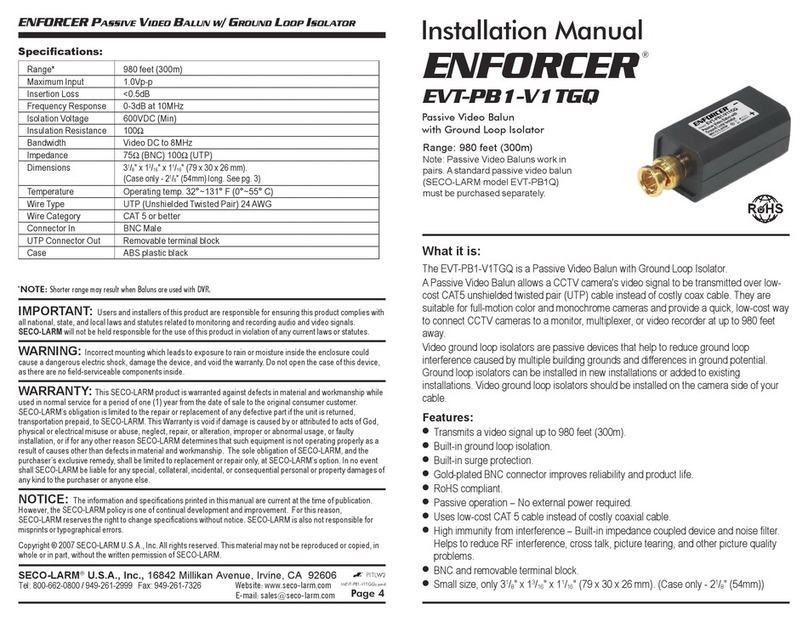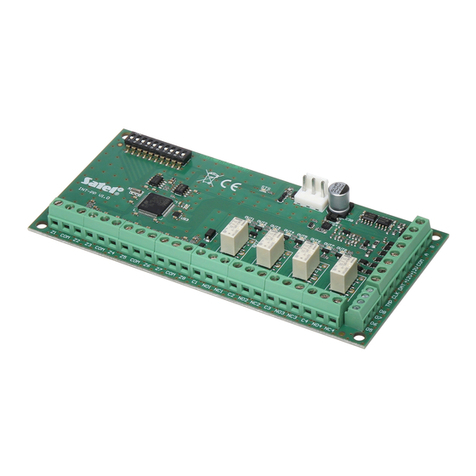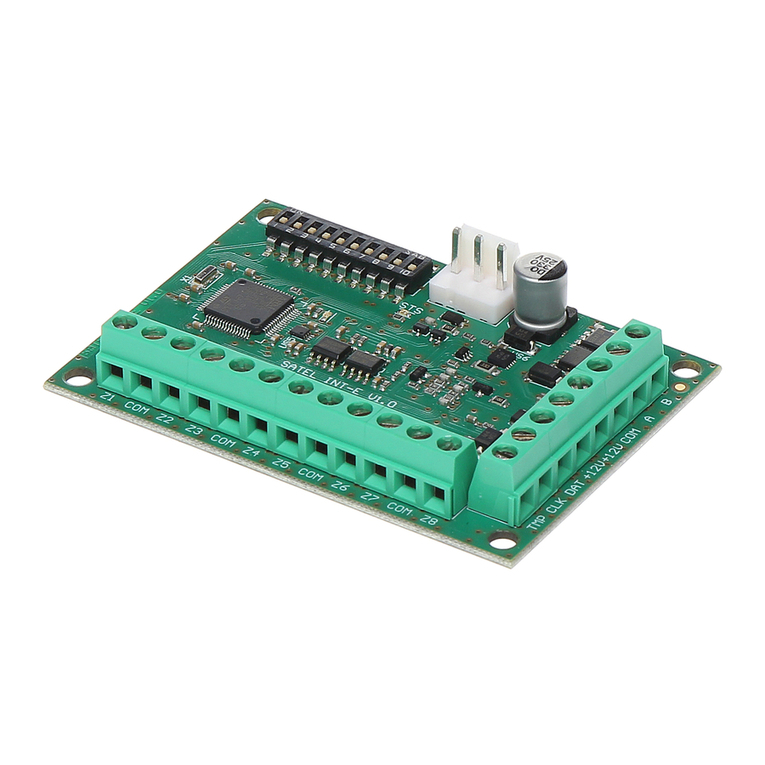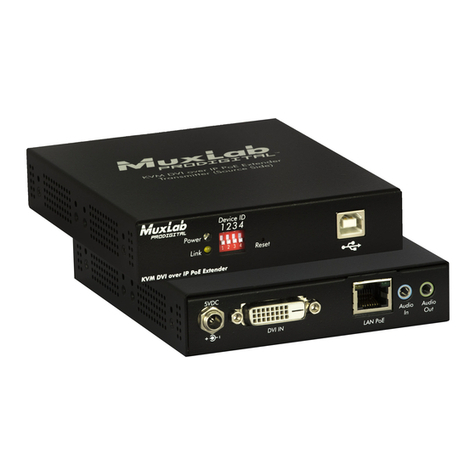
ACX-200 ABAX2
3 – tamper contact. Responds to opening of the housing.
4 – antenna.
5 – screen.
6 – two-color LED indicator. The green color indicates that the expander is running.
Short red flashes indicate communication with the ACU-100 controller.
Description of terminals:
COM - common ground.
+12V - supply input.
TMP - tamper contact terminals.
C1…C4 - common terminal of the relay output (C1 – output 1, C2 – output 2,
etc.).
NC1…NC4 - terminal normally closed to the common terminal of the relay output
(NC1 – output 1, NC2 – output 2, etc.). The terminal opens when
active.
NO1…NO4 - terminal normally isolated from the common terminal of the relay output
(NO1 – output 1, NO2 – output 2, etc.). When active, the terminal is
closed to the common terminal.
Z1…Z4 - zone.
2. Installation
All electrical wiring connections may only be made with the power supply
disconnected.
Prior to permanently mounting the expander, check the level of signal
received from the expander by the ACU-100 controller and, if necessary,
change the place of installation so as to select the optimum location with
respect to communication.
The ACX-200 expander of hardwired zones / outputs should be installed indoors,
in spaces with normal air humidity. The electronics board is mounted inside the
OPU-1 A plastic housing.
In order to install the ACX-200 hardwired zone / output expander in the ABAX system,
follow the procedure below:
1. Open the housing.
2. Make cable inlets in the rear panel of the housing for power cables and cables
connecting the expander with hardwired devices.
3. Prepare a temporary source of 12V DC power supply and add the ACX-200
expander to the wireless system (refer to the ACU-100 controller user manual).
Placed on the electronics board is a sticker with the 7-digit serial number which is
to be entered when registering the expander in the system.
4. Select the place where the ACX-200 expander is to be installed and attach it there
temporarily. It is recommended that the expander be installed at a high position.
Thus you can obtain a better range of radio communication, while avoiding the risk
of the expander being accidentally covered by personnel moving around the
premises.
